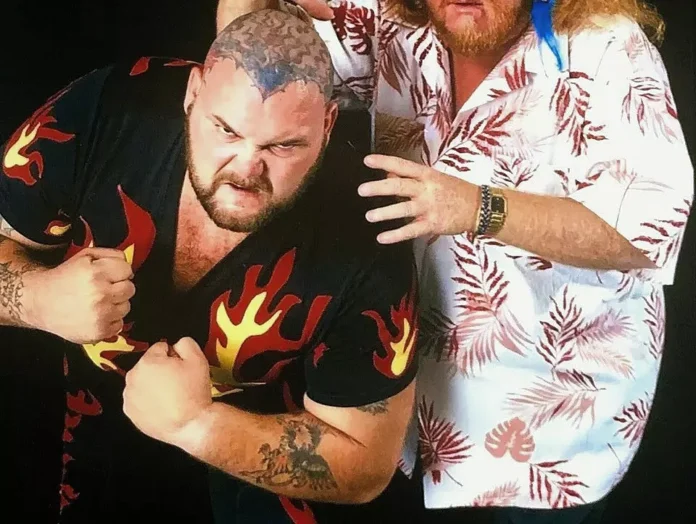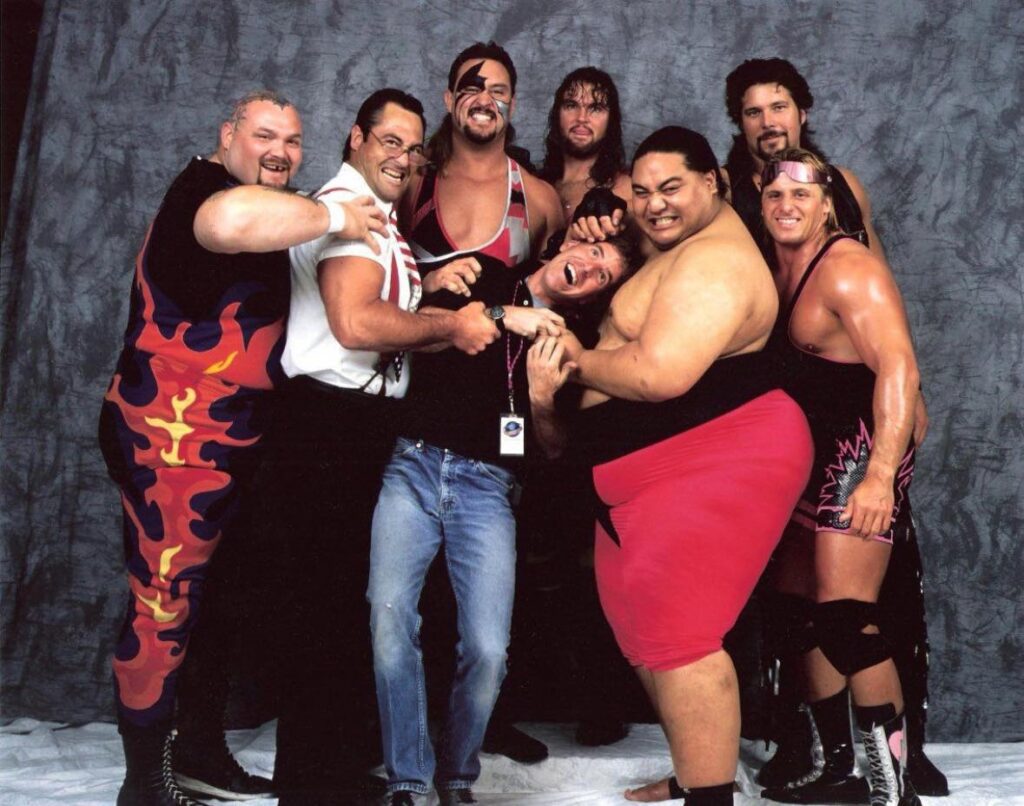Professional wrestling fans remember Bam Bam Bigelow as a truly unique figure. His flame-tattooed head became his trademark in an industry full of colorful characters. Scott Charles Bigelow built his reputation throughout the 1980s and 1990s. He worked on major promotions worldwide. His career left a permanent mark on professional wrestling history.
Early Life and Career Beginnings
Scott Bigelow entered the world on September 1, 1961, in Asbury Park, New Jersey. He competed in high school sports before he found professional wrestling. Larry Sharpe trained him at the Monster Factory wrestling school in New Jersey. This choice launched him toward wrestling stardom.
Memphis Championship Wrestling featured Bigelow’s debut in 1986. His distinctive appearance and unexpected agility impressed promoters nationwide. He secured a World Wrestling Federation (WWF, now WWE) contract within a year.
The WWF Years
Bigelow joined WWF in 1987. Promoters marketed him as “Bam Bam Bigelow, the Beast From the East.” His entrance routine included a cartwheel into the ring. This move shocked fans due to his 390-pound frame. He worked alongside managers like Oliver Humperdink during this period.
He returned to the WWF in 1992 after a brief absence. His second stint brought greater success. Ted DiBiase recruited him into the Million Dollar Corporation. The company pushed him toward main event status. WrestleMania XI in 1995 showcased his most notable moment. He faced NFL star Lawrence Taylor in the headline match. This contest brought mainstream attention to wrestling. Bigelow lost the high-profile bout but gained widespread recognition.
ECW and the World Championship
ECW (Extreme Championship Wrestling) became Bigelow’s home after his WWF exit. The Philadelphia-based company allowed him to display his full potential. ECW audiences embraced his hard-hitting approach and remarkable athletic abilities.
Success came when he defeated Shane Douglas on November 7, 1997. This victory earned him the ECW World Heavyweight Championship. The title reign confirmed his status as a main event star. Taz eventually took the championship from him in December 1998. His battles with Taz, Shane Douglas, and other ECW talents created memorable matches. Fans still discuss these bouts today.
WCW and Final Wrestling Years
World Championship Wrestling (WCW) added Bigelow to its roster in 1998. He became part of their star-studded lineup. His WCW tenure included programs with Goldberg, Diamond Dallas Page, and Hogan. He won the WCW World Tag Team Championship with Diamond Dallas Page.
The end of his mainstream wrestling career coincided with WCW’s decline. WWE purchased the company in 2001. Bigelow performed on independent shows before he stepped back from full-time competition in 2002.
Wrestling Style and Innovation
Bigelow stood out because of his rare combination of size and agility. He stood 6’4″ and weighed nearly 400 pounds, but performed moves typical of much smaller athletes. His move set included:
- The moonsault (a backflip splash from the top rope)
- Diving headbutt
- Enzuigiri (a spinning kick to an opponent’s head)
- Various power slams and throws
Historians credit Bigelow with the transformation of how big men wrestle. Heavyweights rarely left their feet or climbed the ropes before him. Bigelow shattered this stereotype. He paved the path for future generations of athletic big men.
Personal Struggles and Legacy
Bigelow faced many challenges after his wrestling career ended. Financial problems and health issues plagued him. These difficulties affect many retired performers. Scott “Bam Bam” Bigelow died on January 19, 2007, at age 45 in Hudson, Florida.
His impact on wrestling remains significant. Current WWE stars name him as an influence. He changed expectations for heavyweight performers through his combination of power and aerial moves. The industry lost a true pioneer when Bigelow passed away. His legacy continues through his matches and the wrestlers he inspired.
Notable Rivalries and Matches
Bigelow engaged in several memorable feuds throughout his career:
Lawrence Taylor: Their WrestleMania XI match attracted mainstream media attention.
Taz: Their ECW feud culminated when Taz ended Bigelow’s championship reign.
Shane Douglas: They battled over the ECW World Championship in classic contests.
Goldberg: Their WCW matches showcased two powerful athletes on a collision course.
These rivalries produced bouts that highlighted Bigelow’s versatility. He excelled against smaller technical wrestlers and fellow powerhouses alike.
Championships and Accomplishments
Bigelow earned numerous championships throughout his career:
- ECW World Heavyweight Championship
- NWA World Tag Team Championship
- Multiple regional titles across different promotions
The wrestling press recognized his contributions beyond championships. Wrestling magazines featured him on covers and in articles about his exceptional abilities.
Cultural Impact
Bigelow achieved fame beyond the wrestling ring. He appeared in the movie “Major Payne” and on television shows. His distinctive appearance made him recognizable to casual viewers. The flame tattoos on his skull served as his personal brand. This distinguished him in a crowded industry.
Video game developers preserved his legacy for new generations. They included Bigelow as a playable character in several wrestling games. These digital appearances introduce him to fans who never saw him perform live.
Conclusion
Bam Bam Bigelow stands as one of wrestling’s most distinctive performers ever. His blend of size, strength, and remarkable agility changed perceptions about big men in wrestling. His premature death saddened the industry. And his influence lives on through the wrestlers he inspired and the memories he created for fans across America.
The Beast From the East proved limitations exist only in the mind. Bigelow demolished stereotypes throughout his career. Professional wrestling evolved because it pushed boundaries. He redefined expectations for super heavyweight competitors. His legacy remains secure in wrestling history.
Common Questions
What caused Bam Bam Bigelow’s death?
Scott “Bam Bam” Bigelow died on January 19, 2007. Medical reports listed multiple drugs in his system. He suffered from heart disease at the time of his death. The official cause was listed as accidental drug overdose. Health issues plagued him in his post-wrestling years.
How did Bam Bam Bigelow get his flame tattoos?
Bigelow received his famous flame tattoos in the mid-1980s. The design covered his entire head. These tattoos became his trademark look. He wanted a distinctive appearance to stand out in professional wrestling. The investment paid off as fans recognized him immediately.
Did Bam Bam Bigelow ever win a WWE championship?
Bam Bam never captured a championship in WWE (formerly WWF). He came close several times. His main WWE accomplishment was his WrestleMania XI main event against Lawrence Taylor. He found championship success in ECW and WCW instead. WWE fans remember him for his impressive performances rather than his title reigns.
What wrestlers did Bam Bam Bigelow influence?
Many modern big men cite Bigelow as an influence. Kevin Owens mentioned Bigelow as an inspiration. Keith Lee also credits Bigelow’s agility as groundbreaking. His work opened doors for athletic big men. The current generation of heavyweight wrestlers benefits from his legacy.
What made Bam Bam Bigelow unique in professional wrestling?
Bigelow combined exceptional size with unexpected agility. He performed moonsaults and top-rope maneuvers despite his 390-pound weight. His flame-tattooed head created an unforgettable visual. His blend of power moves and aerial attacks changed wrestling forever. No other performer of his size demonstrated such athletic versatility.
Read Next: Inquiry About Oona Gray Seppala’s Background


